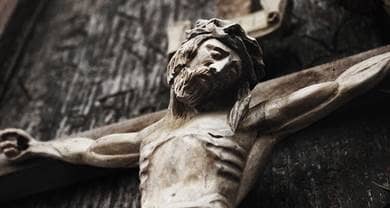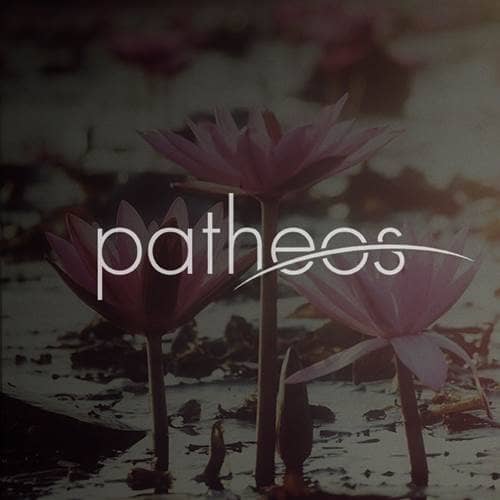- Trending:
- Pope Leo Xiv
- |
- Israel
- |
- Trump
- |
- Social Justice
- |
- Peace
- |
- Love

RELIGION LIBRARY
Roman Catholicism
Symbolism
The Catholic world is filled with both visual and verbal symbolism, and nowhere more so than in worship and ritual. Every word and action in Catholic rituals point beyond themselves to the divine life of God and the believer's salvation. The symbolism of the Mass, for instance, begins before believers even enter the doors of the church, for somewhere in a room set apart the priest who will celebrate the Mass is putting on ritual vestments of determined colors in a particular order with a series of prescribed prayers asking God to purify, protect, and bless him. The simple act of putting on clothing has become the symbolic act of preparing body and soul to participate in the mystery of the Eucharist.
Each element of the Mass has a symbolic meaning and a historical reference. Some elements, such as the acclamation known as the Kyrie (Greek for "Lord!"), symbolize the Church's ties to its historic roots; others, such as the greeting known as the Sign of Peace, symbolically weave the individual believers into a community. A sacred choreography takes place as participants stand, kneel, and sit for various elements. The believer is inundated with symbolism in the midst of all these ritual actions, and in the ritual words as well, which are designed not only to guide the believer to salvation but also to enact the teachings of the Church. The development of doctrines such as those concerning Christ's human and divine natures; the rejection of heresies, such as the formulation of the Nicene Creed to negate the belief that Christ was a created being; the importance of the Church itself in the flow of salvation from God to the believer - we may say that the entire history of the Church is symbolically contained within the Mass.
The physical spaces of Catholic churches and cathedrals are rich with symbolic meaning. Everything the Catholic sees upon entering a place of worship has a particular meaning when someone knows how to read it. Most cathedrals and many churches are laid out in some form of a cross, the most recognizable Christian symbol. A relic, a piece of bone or clothing from a saint, is embedded into the altar of almost all Catholic churches and cathedrals, blessing the space with its holiness. The sacred spaces are decorated with statuary, paintings, and other forms of visual art that depict scenes from the lives of Christ, Mary, and the saints or representations of Catholic doctrines like judgment, salvation, and a heavenly future. Some cathedrals have ceilings that reach toward the heavens to send the believer's soul soaring to the skies. The stained glass windows are art, storybook, and catechism all rolled into one, laying out stories from the lives of Jesus, Mary, and the saints.
Most of the great cathedrals were built in a time when no more than 5% of the population could read words, but the majority of the Catholic population could read symbols. When they saw a stained glass window showing a woman holding a cross, for instance, Catholics of bygone days understood that this was St. Helena, just as a man wearing a black robe and holding a book was St. Benedict. Stories of the saints were told to instruct Catholics in the Christian life, and the art Catholics saw around them was designed to reinforce that instruction. Reading the book of symbols may be more difficult for modern Catholics than for their medieval and early modern counterparts, who were instructed in their faith with the help of this sort of symbolism rather than with books.
Color plays an important role in the world of Catholic symbolism. The colors of cloths draped on the altar, priests' vestments, and even stained glass windows have symbolic meanings. White and gold symbolize purity and light; black signifies mourning. Green stands for hope, red for the blood of the martyrs and for fire, and purple for penitence. Blue is traditionally associated with the Blessed Virgin Mary, although it is not an official liturgical color. The Church prescribes that vestments of a particular color be worn for each Mass on each day of the year. The prescribed color is determined based on the feast or holy day being celebrated and the liturgical season of the year.
The liturgical seasons are themselves an important display of Catholic symbolism. The Catholic year moves through seasons representing the most significant elements of the life of Jesus: his conception, birth, death, resurrection, and ascension into heaven. Many other moments of the life of Jesus, as well as remembrances of the lives of his mother Mary, the apostles and the saints, mark the Catholic year.
All of these symbolic actions and elements are, Catholics believe, supplemental to the greatest symbolic work of all: nature itself. Catholic theologians from Augustine onward have taught that God wrote the Book of Nature, along with the Book of Scripture, so that everyone would be able to read and learn the truth. Scripture is confined to the literate, but nature is a book that can be read by all, who will see in its round of birth, death, and resurrection the central story of all creation. Whatever symbolism the Church employs is but a tribute and reflection of the deeper symbolism that God has set forth in the world.
Study Questions:
1. How has symbolism become embodied in ritual?
2. How is the history of Catholicism contained in Mass?
3. Describe a few examples of symbolism within the Catholic Church.
4. How did symbolism help parishioners overcome illiteracy?
5. Why is the liturgical calendar the most important display of Catholic symbolism?










